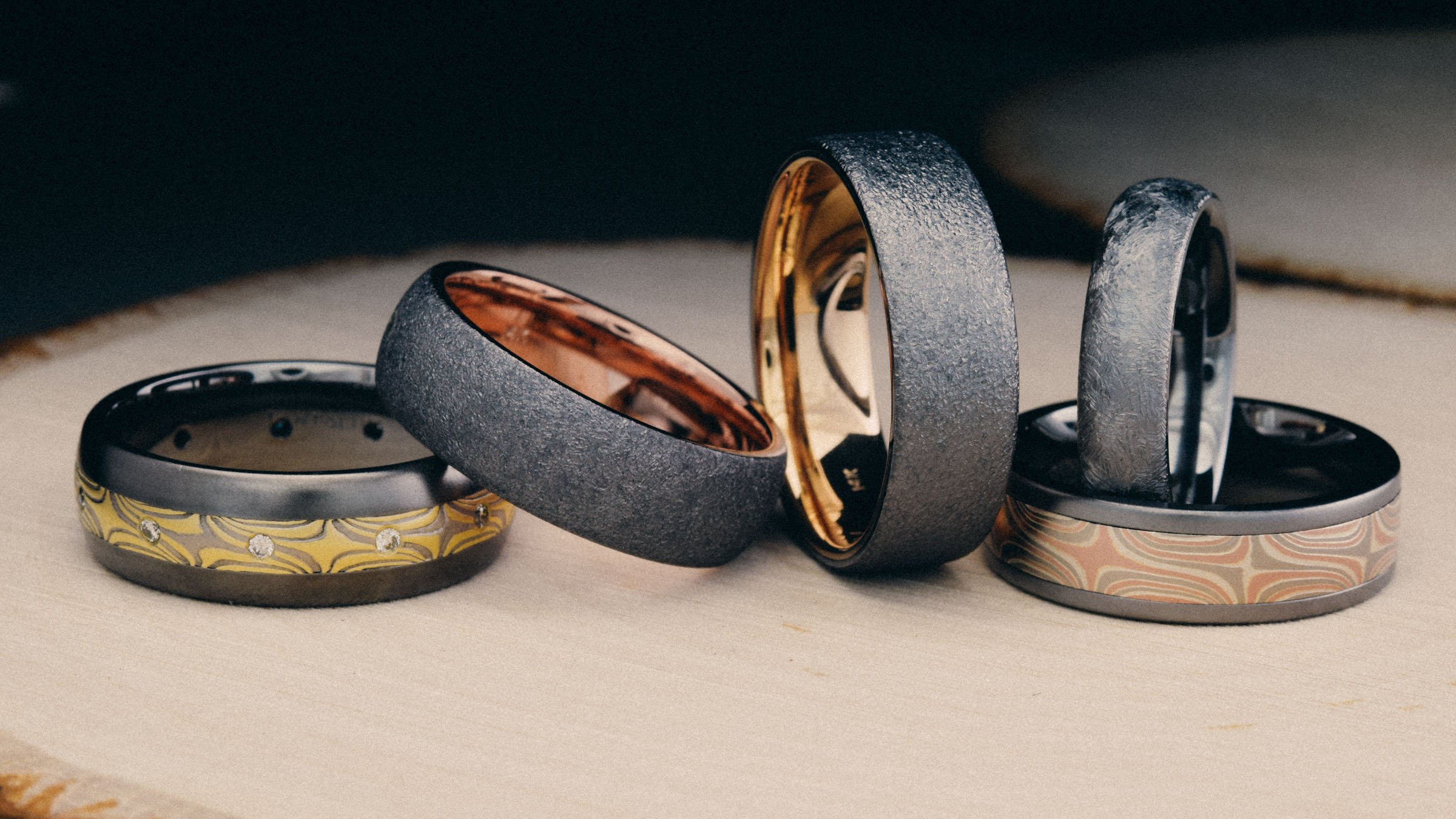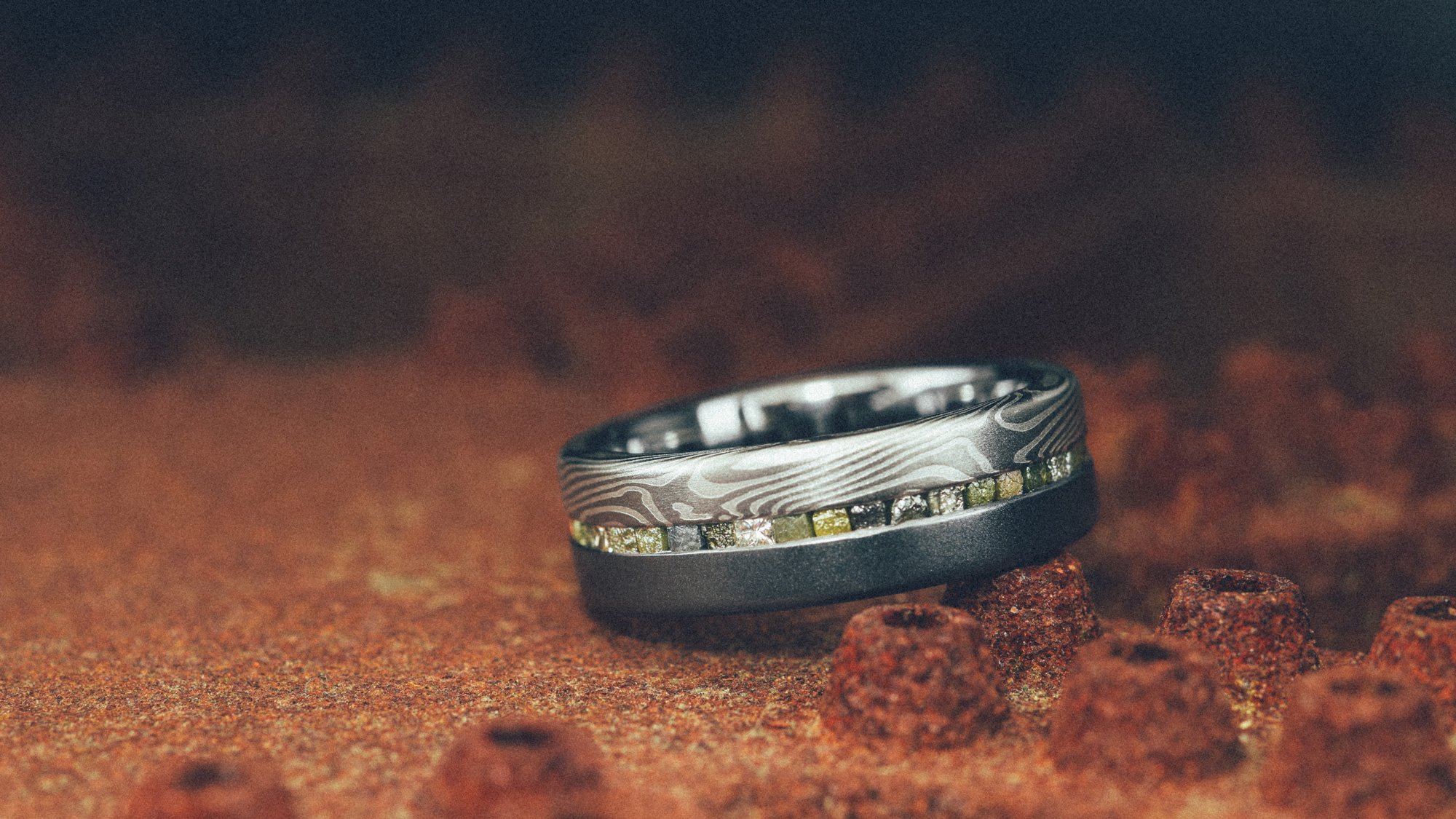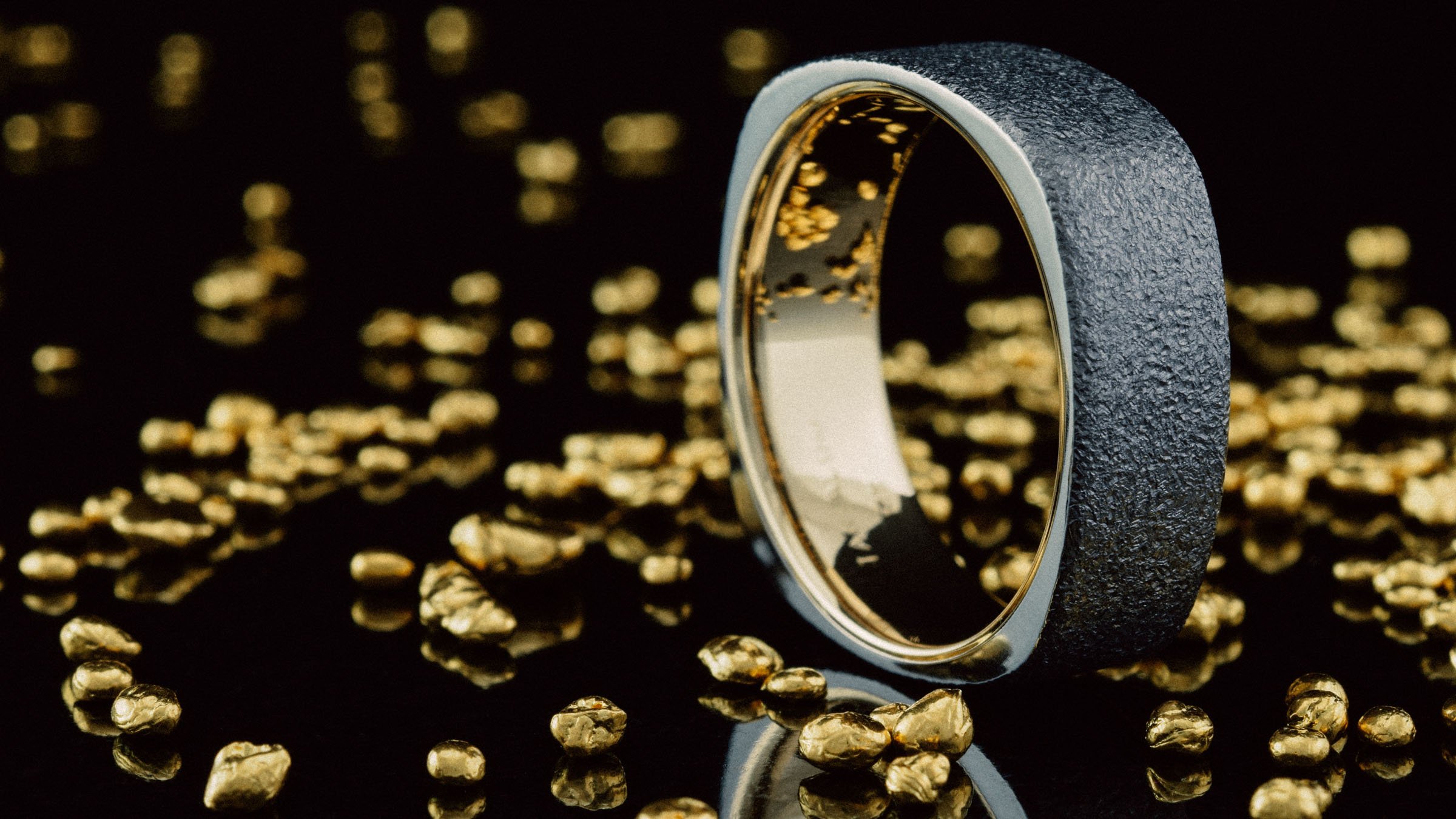Tantalum - A new precious jewelry metal for rings and wedding bands
What is Tantalum?
In the world of metals, Tantalum stands out as a one of the most remarkable elements. It has a fascinating history and exceptional properties that make it highly desirable for many industries. Discovered in the early 19th century, Tantalum has become essential in many technological and aerospace applications, and more recently has taken off in popularity as a rare earth jewelry metal. At STEVEN JACOB we first began experimenting with Tantalum in our jewelry designs in the early 2000’s. Tantalum’s natural beauty with its deep blue-grey hue is immediately apparent, though its unique qualities do present daunting challenges in the studio due to its unusual mechanical properties and resistance to many traditional jewelry making techniques.
Tantalum was first discovered in 1802 by Swedish chemist Anders Ekeberg. He isolated the element from mineral samples found in Sweden and Finland and named it after Tantalus, a figure in Greek mythology. The road to its discovery involved several metallurgists and chemists, each contributing to and expanding the understanding of this intriguing metal.
Tantalum is a transition metal with a dark lustrous appearance. It is part of the refractory metals group, known for their high melting points and resistance to corrosion. Tantalum is exceptionally rare in nature and is always found along with, its neighbor on the periodic table, Niobium. After Tantalum rich mineral groups like Tantalite, Columbite, Tapiolite and Coltan are mined, Tantalum, Niobium and other elements are extracted from them to provide essential metals for many high tech industries.
Unique Properties of Tantalum:
Corrosion Resistance: Tantalum is highly resistant to corrosion, making it an excellent choice for jewelry that withstands the test of time. This quality also makes it ideal for specialized resisters, capacitors, superconductors and vessels for processing highly corrosive liquids.
Biocompatibility: Tantalum is biocompatible, meaning it is non-reactive with the human body. This property makes it an ideal metal for crafting jewelry that comes into direct contact with the skin. Because of tantalum’s extreme inertness, it is often used in medical implants.
Density: Tantalum is very dense and when made into a ring has a substantial feel similar to that of Platinum. NASA uses Tantalum to shield its spacecraft from cosmic radiation.
High Melting Point: With a melting point of 3,017 degrees Celsius (5,463 °F), Tantalum ensures that jewelry will remain stable and retain its form even under extreme conditions. Nosecones of rockets are often made from Tantalum for this reason.
Ductility: While Tantalum is very dense, it is also extremely ductile due to its atomic crystal structure making it workable for jewelry applications. This quality also makes it ideal for use as armor in military vehicles to absorb explosive blasts without tearing.
Tantalum, with its rich history and exceptional properties, has emerged as a much sought-after metal for crafting bold and enduring jewelry. Its use in wedding bands symbolizes not only the commitment of marriage, but also strength, lasting beauty and enduring love. As new and innovative uses for this remarkable metal are discovered, Tantalum’s star is sure to shine brightly in both the worlds of science and art, and redefine what we have come to consider a precious metal.






